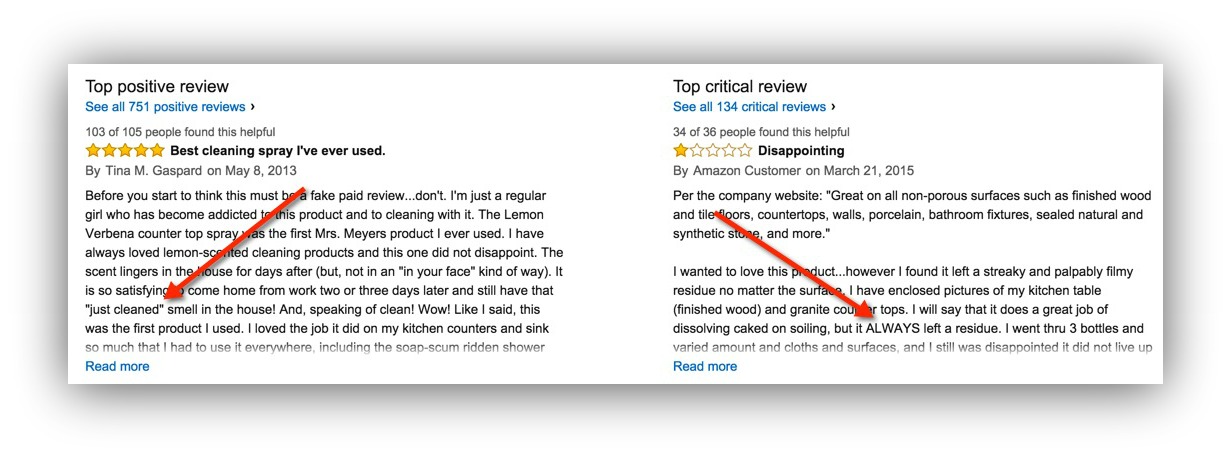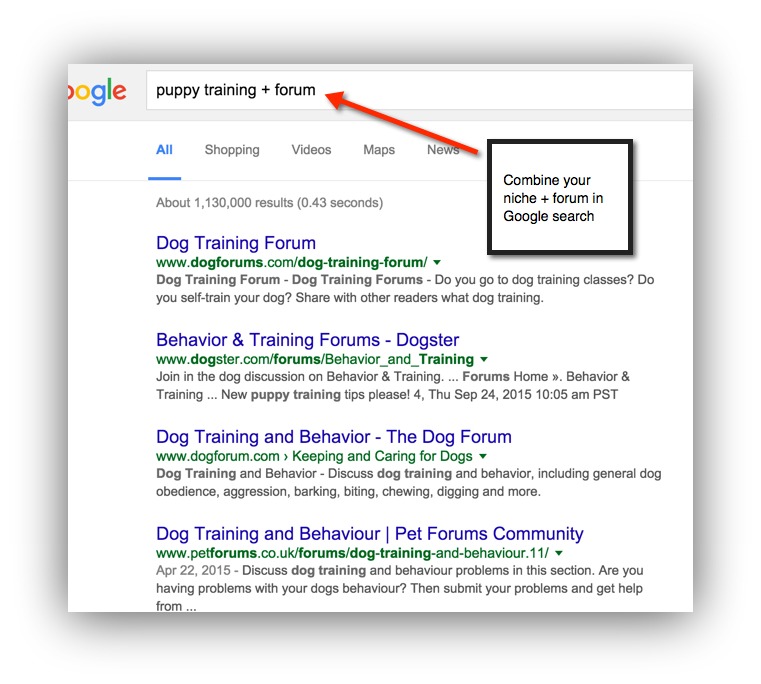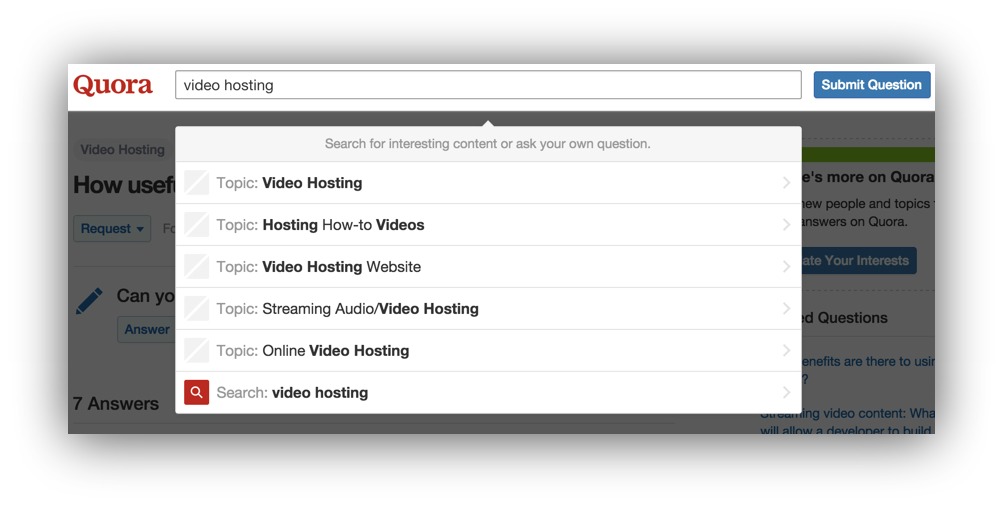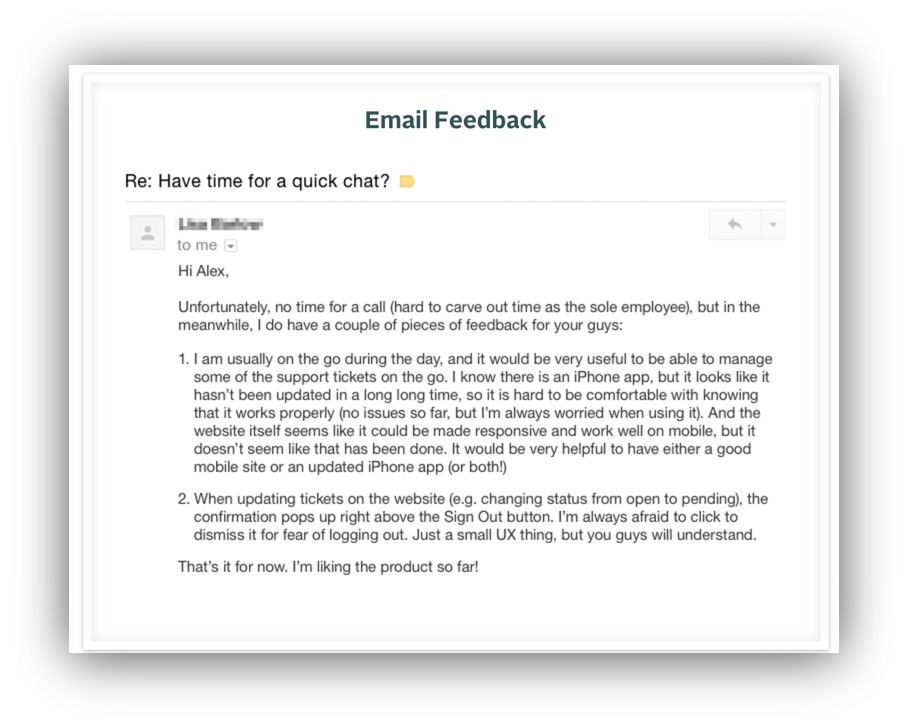I hate to break this to you…
But you’re pissing your customers off.
You’re posting, emailing, and writing copy on your website that isn’t engaging them. Or worse, it’s content they consider totally irrelevant.
This is a problem. A very big problem.
Just last year, Google Consumer Insights conducted a survey of 1358 U.S. adults to better understand how they feel about emails from businesses.
The findings were pretty startling when it came to how often they said they received irrelevant emails.

49% reported receiving irrelevant emails on a daily basis while almost 30% received them on a weekly basis.
And this isn’t even the scariest part. 31.6% of the people surveyed flagged irrelevant email as spam.
Keep in mind, these are people who said yes to hearing from these businesses. Which means they were so annoyed by the messages they were receiving, they chose to hit the spam button instead of simply opting out of these lists.

And there’s more…
63% of consumers don’t feel understood by their favorite brands according to a 2015 study by IBM. The study highlighted the huge disconnect between how businesses perceived how well they were communicating with their customers.
The upshot? Companies think they are doing a bang up job of talking to their customers when in fact they’re not.
So if the majority of businesses are failing to communicate with their customers, why should you even care?
Because that’s exactly how you can get more leads than your competitors.
Just by crafting a headline that truly resonates with your customers, you can quadruple the amount of clicks on your website.
Don’t believe me? Here’s an actual real life example:

This website’s headline was originally “Your Addiction Ends Here”.
However, after paying hundreds of dollars in online ads to bring in traffic, almost all of the visitors would leave without signing up.
It was a total waste of money.
It wasn’t until the owners of the company decided to hire an expert, Joanna from CopyHackers.
After doing tons of research to understand the target market, Joanna changed eight words by using the headline, “If You Think You Need Rehab, You Do”.
By just changing the headline, it resulted in 400% more clicks on the main call-to-action button.
That’s the power of communicating effectively with your customers. Fortunately, you don’t need to hire an expensive consultant. With the right techniques and advice, this is something you can do yourself.
And the first step to connecting with your customers, is to get to know them intimately.
How to Get to Know Your Target Market Better Than They Know Themselves
One of the most powerful things you can do when communicating with your target market is to make them feel understood. Studies have shown on a neurobiological level that when people feel understood areas of the brain associated with reward and social connection are activated
Which means they are far more likely to be receptive to the messages they are hearing.
And the best way to make your target market feel understood? Use the same words they use to describe their problems, desires and fears around your industry.
After all, as Jay Abraham has said, when you can define the problem better than your customer, they assume you have the solution.”
So how do we figure out exactly what their problems, fears, and desires are?
Research.
Specifically, voice of customer research.
If that sounds complicated, don’t worry. It’s not.
It’s simply about finding and pulling out the key phrases your ideal customers are saying either online, in surveys, or even interviews then using them to inform decisions about your copy.
Believe me when I say, “It works!”
Don’t just take my word for it.
In a behavioral study, researchers in the Netherlands had waiters repeat back to their customers their orders in the words they were using to determine if mimicry would increase tips. The researchers found that by using their customer’s words the waiters doubled their average tip amount.
In this guide, I’m going to give you three foolproof strategies loaded with examples of where to find those voice of customer gems that will help you communicate way more effectively with your prospects and customers so you can start improving conversions.
The best part? All of the resources are free.
But before we dive into those strategies of how to find those messages, let’s first talk about…
Exactly What to Look For In Your Research
While doing research into your audience, the most important thing is to understand how they think, feel, and talk in regards to your business.
We want to know things like:
- How they perceive the benefits versus the costs
- What makes them want to shout from the rooftops about the product
- What prompted your target market to start searching for a solution to their problem now
- What words they use to describe their problem and the solution.
The best way to find the answers to these questions is by making note of recurring messages straight from your customers’ mouths that fall into the following three categories.
1. Their Motivations and Needs
Your visitors seek you out for various reasons.
They may be looking for answers to their questions, to buy something on the spot, or be entertained. Their motivation is the driver behind ultimately moving them to click that download or buy button.
Think of it as the deep down why behind what they really want. Take diets as an example.
As you can see in this screenshot from Weight Watchers, the motivation they’re tapping into here is the desire to be a happier and healthier person.

The copy here addresses what their visitors ultimately need Weight Watchers to accomplish for them. This expressed desire is what you want to be looking for when you start sifting through the actual words your customers are saying.
2. Their Biggest Pain Points
Your target market is looking to solve a problem.
That problem generates his or her pain point. Ideally, your product or solution will alleviate it.
With the diet example, the key pain point presumably is losing weight. But, that may be only one of many. Considering every weight loss diet promises to help you lose weight, the challenge or pain may be in finding one that fits your lifestyle.
Or, that has meal plans… caters to gluten allergies… the list goes on.
The point is that whatever itch your visitors are looking to get scratched is their pain. Your job is to understand what that pain is and let them know how you can solve it for them.
3. Their Hesitations
Hesitations or concerns in your customer’s mind can be a major roadblock to converting.
These are the thoughts that if not countered with the right copy at the right time can cause undue friction for your visitors.
What do I mean by friction?
Well, anything that makes it more difficult for your visitors to get things done on your site. This can be as simple as uncertainty over whether a credit card is necessary for a free trial.
Or, it could be concern over having to be locked into a long term contract. Knowing their hesitations and objections helps you overcome them: 
I like to use a Google doc with columns to keep all of my swiped copy organized. I divide it up by the 3 types of messages I’m looking for with space to copy and paste all of the words and phrases I find.

You can grab a copy of this cheat sheet by clicking here.
3 Free Market Research Platforms to Read Your Target Market’s Minds
Now that you have an idea of what to look for, it’s about time we jumped straight into where to look.
All of these strategies are completely free and you can get a surprising amount of information in just an afternoon of digging.
So grab some tacos and settle in.
Strategy #1: Dig Into Online Reviews
Online reviews are one of the best ways to find intel about your target market.
And the best part is, it doesn’t have to be reviews of specifically what you’re selling. You can still get a wealth of information to apply to your own product or solution even if you’re looking at reviews about comparable products or products in the same industry.
The goal here is to find out what’s driving your ideal customers, what’s keeping them up at night, why they make the decisions that they do.
You can glean a ton simply by searching what they say about your competitors.
And just imagine what you can do with this information…
You’ll have an inside view into what your target market thinks about what your competitors are selling… and how you can do a way better job marketing your own products.
Pretty cool. Right?
Here’s where to find the best reviews:
Yelp
When I think of Yelp, I think restaurant reviews. But I have to remind myself that there’s a whole world to Yelp beyond food.

You can find reviews on everything from doctors to doggy daycares, which means Yelp is a fantastic resource for local businesses.
For instance, here’s a review from one of the many doggy daycares near me.

After looking at a number of the reviews from just this one daycare, I noticed recurring themes: people referring to their pets as kids and relief their dogs were safe and happy when they picked them up.
These would be items I’d be sure to keep on my running list of what people wanted and the pain they were hoping to solve with this kind of service.
And, here’s how I’d use this awesome little piece of intel. The screenshot below is from the homepage of the doggy daycare I send my pup to.

I’d change the headline and sub-headline so it:
- Includes some of those key words customers repeated over and over again
- Lets potential customers know they will solve one of their major pain points
Take a look at the new combination.
In Home Training and Doggy Daycare for Your Canine Kid When you want the best for dog bring him to Augusta where he’s always part of the family
It pulls in one of those key words cited over and over again in the reviews and lets visitors know their pups’ wellbeing is a priority.
Once you’ve dug through Yelp, you can move onto the biggest retailer in the world:
Amazon
Amazon reviews are one of my all time favorites when it comes to resources for pulling voice of customer info.
And I’m not alone – Sarah suggests you use Amazon reviews when you’re creating enormously popular content.
What makes Amazon such a crazy rich resource for customer messages is the sheer volume of items for sale and reviews. Take eco friendly cleaning products for example. Type that into the search bar and you’ll get over 15,000 entries to look at with most having multiple reviews.
When you pull up the main review page for Mrs. Meyer's Clean Day Multi-Surface Everyday Cleaner Basil, 16 Fluid Ounce, you’re greeted with the Top Positive and Top Critical reviews. Amazon tells you how many people found each of those reviews most helpful so you can get a good idea how much weight to place on them.

103 out of 105 people agree with the top positive review which means highlighting “‘just cleaned’ smell” in the house for use in your copy would be a very good idea to test.
AppStore and Google Play
If you have an app, then one of these sites is the place to go. And even if you don’t have an app, it’s a good place to do a bit of competitor research.

This review from Thrive Market’s app page spells out how much this person is saving and exactly how she feels about the prices from the competition. Clearly, staying on a budget is important and this app helps with that.
If price and saving is echoed by others in the reviews repeatedly, this may be a key point to highlight not only in the app description copy but on the website.
This is exactly what Thrive Market does on their home page.

As you can see, they highlight the cost savings making it the first thing you notice when you land.
Other places to search
- Industry review sites like Capterra.com for B2B software solutions
- Etsy for handcrafted items
Strategy #2: Stalk a Few Forums
I’ll be honest…
Online forums and sites where people pose questions looking for answers can be a crapshoot when it comes to finding copy and messages worth swiping. I’ve struck out more than once but when I’ve been able to find my ideal customers voicing their heartfelt desires and concerns, it’s been well worth the time.
Most forums are free to lurk, which makes them a treasure trove for customer stalking.
So how do you go about finding forums that will be relevant to the kind of research you’re doing?
Take it to the big G.
In the search bar, type in your industry or niche + forum and you’ll get a string of results filled with discussion boards and commentary.

Dive into any one of these forums and you’ll find juicy bits of copy about the frustrations people are having training their dogs and some of the biggest training issues.
What can you do with that information? If you’ve got a dog training business like Augusta, you could use it not only to help you write your services page but also decide what types of services people want the most.
Is it just puppy training or do people need just as much help with older dogs? Looking through these types of forums is a great starting point to find out this information.
Want an example of this in action?
Who am I kidding. Of course you do!
After you’ve dug through some forums, onto the next one…
Quora
Quora is a question and answer site where anyone can join in on a discussion as long as you have created an account.
If you’re just looking to gather some intel, simply start typing a topic in the search bar.

You can see what happens when I put in the term “video hosting.” I get a number of options to choose from that will lead me to ongoing conversations.
The best way to use Quora for our purposes is to make note of the questions people in your ideal customer base are asking.
These questions can help you understand possible gaps in your industry’s marketing, what people are confused about, why they’re questioning the value of a service like yours.

Other places to search
- Reddit – While it has it’s fair share of controversial and less than appealing threads, you can find forums or “subreddits” that cover just about any topic imaginable.
- Blog post comments – Search for relevant blog posts that address common questions your customers have and then sift through the comments.
Strategy #3: Tease Apart Testimonials, Interviews and Complaints
Testimonials don’t just increase conversions like crazy.
They can also be a goldmine filled with voice of customer insights – and so can complaints.
Usually when we think of testimonials or complaints, it’s either kind words our recent customers have sent to us so we can display them somewhere on our sites or the negative reviews we’re hoping will go unnoticed on some third party site.
There are other places to search and mine for these types of comments so you can learn what your prospects and customers are raving about (good or bad).
Emails from People on Your List
When was the last time you got a reply from someone on your email list letting you know how much he enjoyed the content of your last email?
Or one of your clients outlined some part of your process that she found spectacular during an email exchange?
If you can’t remember or don’t know, now’s the time to start keeping track of these in a mail folder or Evernote so you can mine them later. Why? You may decide to adjust your services or develop a new offering and those emails contain insights to help you shape your messaging.
Here’s an email I received from someone on my list with a question on how to decide what to focus his copy on when talking about his business.

He found my free email course particularly helpful because it was “succinct” and made the complex clear. That’s great feedback about what people want and find useful I can draw on when I’m putting more of these types of courses together.
Interviews
Interviews are one of the best ways to find out how people truly feel about what you’re selling because you can keep digging until you get more than two word answers.
When you talk to someone you’re able to ask follow up questions and encourage the person to give you more details.
The guys over at Groove go out of their way to listen to their customers so they can continually improve their product and write better copy that connects.
A couple of years ago they sent an email to every one of their customers to see if they would be willing to hop on a 15 minute call to find out “What you like. What you love. What you hate.”
They logged in 500 calls. The responses to their questions helped them improve their onboarding, fix bugs, and spot recurring messages to amp up their copy.
And even when customers didn’t have the time to chat, they still reached out via email to provide feedback.

Talk about a win/win for both Groove and its customers. Groove got a crazy amount of actionable intel for their business and their customers got to feel valued as an important part of growing the business.
Competitor Testimonials
Along with your own testimonials, you can also dig into your competitor testimonials to see what their customers love about them.
Are they using similar words and phrases that your customers do? Are their customers voicing different challenges than yours?
Looking at your competitor testimonials are yet another way to help you identify what problems, concerns, and desires your target market has.
And, they can clue you into whether or not you haven’t addressed them in your own copy.
How to Use Your Research to Increase Conversions
If you’ve gotten this far, you may be wondering how this research will increase conversions on your website.
And luckily we’ll tell you exactly how:
Through using the words that resonate the most with your visitors – the ones taken directly from your voice of customer research in your copy.
Like Laura Roeder did after running a test using Visual Website Optimizer. She wanted to see if swapping out the sub-headline on her homepage with a subscriber’s testimonial would improve conversions.
In the control version, the sub-headline asks the question, “Could you use a free plan for promoting with social media?”

The variation uses the swiped testimonial, “Yours is the only newsletter I actually read.”

Signups to her newsletter increased by 24.31% The new sub-headline addressed the hesitations most of us have before signing up for yet another list – will the emails be worth reading and/or will they actually get read. Another example is a test I did with Joanna of CopyHackers for Dressipi.com, a service that gives women clothing style and fit recommendations:

We combed through online forums where we found women not only talking about their challenges finding clothing they felt attractive in but also about their experiences with the online service.
Armed with that information, we reworked the headline and button copy to better reflect what was truly driving these women to seek out this solution – feeling good about themselves “just as I am.”

To increase conversions and encourage your target customers to follow through on your calls to action, use the insights you found through your market research in your button copy, headlines, and calls to action.
Then, sit back and watch the conversions roll in.
Start Listening to Your Customers to Skyrocket Conversions
Customer research pays off.
It provides you with insights into their problems, fears, and desires along with the words they’re using to talk about products and solutions like yours.
As you’ve seen, this is incredibly powerful information.
Being able to reflect back to your prospects and customers the messages swimming around in their heads, lets them know they’ve landed in the right place… giving them waaay more reason to stick around.
And sign-up, buy, download, or whatever else you’d like them to do.
Here’s where you can start:
Step 1: Choose one of the ways talked about above to gather your own customer research. I suggest starting with the review sites like Amazon because they have so much content to mine.
Step 2: Grab the cheat sheet available for download we created so you can keep a running list of the words and phrases that tap into your ideal customer’s motivations, pains, and hesitations you find.
Step 3: Make a few changes to your copy using the messages you’ve copied and pasted into your cheat sheet. Then, test your changes out and measure the results.
You might just be amazed by what you learn.
Jen Havice is a conversion rate optimizer and persuasive copywriter who helps Subscription businesses convert and retain more customers. Get more of her conversion resources for free here or follow her @jenhavice.










Add A Comment
VIEW THE COMMENTS